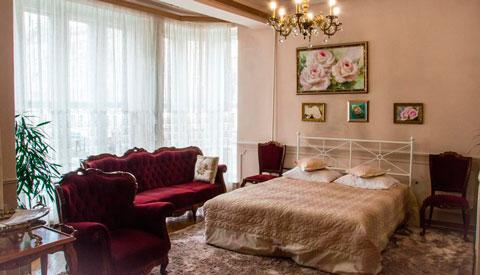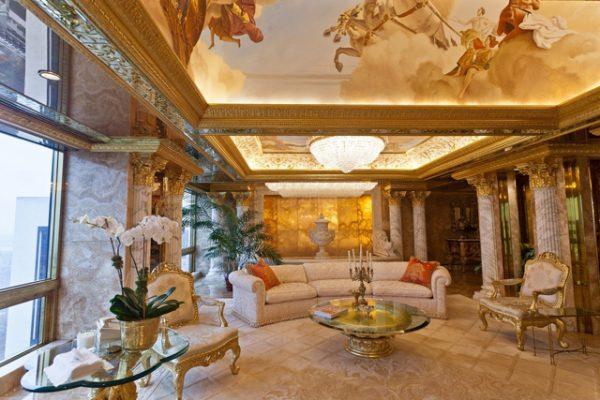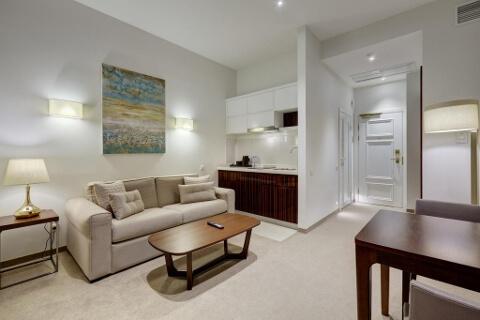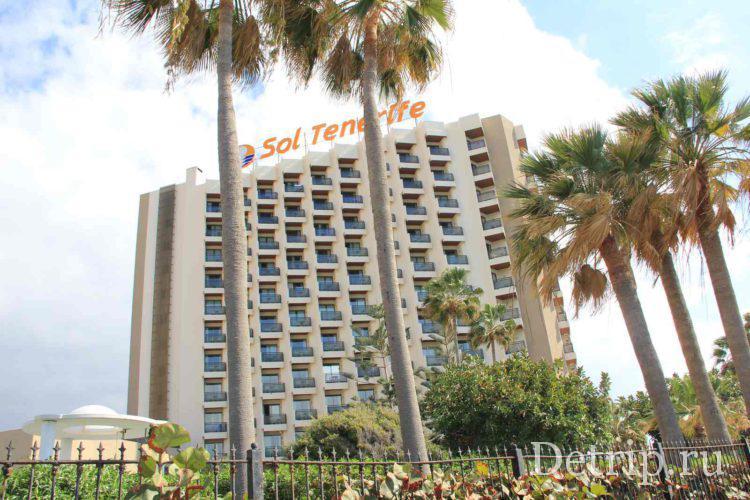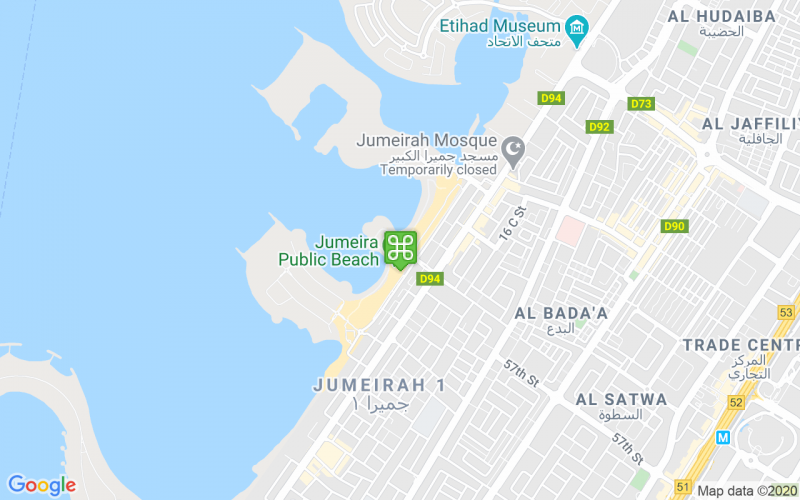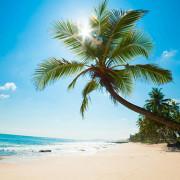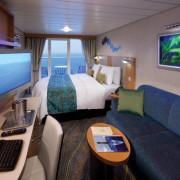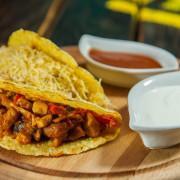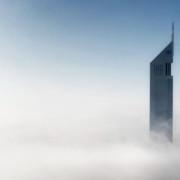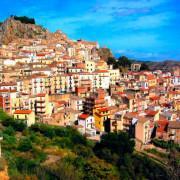Third night free!
Содержание:
- Human history
- Eat[edit][add listing]
- Природные особенности
- See[edit][add listing]
- Stay safe[edit]
- Climate
- Ecology
- Get Around[edit]
- External links
- Hurricane Ridge
- Recreation
- Understand[edit]
- Номера и цены
- Описание
- Гарантируем лучшие цены в апарт-отеле Olympic Park!
- Kalaloch
- Жилые комплексы — продажа квартир рядом
- Последние изменения
- Ruby Beach
Human history
A Makah Woman, circa 1900
Prior to the influx of European settlers, Olympic’s human population consisted of Native Americans, whose use of the peninsula was thought to have consisted mainly of fishing and hunting. However, recent reviews of the record, coupled with systematic archaeological surveys of the mountains (Olympic and other Northwest ranges) are pointing to much more extensive tribal use of especially the subalpine meadows than seemed formerly to be the case.
Most, if not all, Pacific Northwest indigenous cultures were more or less severely adversely affected by European diseases (often decimated) and other factors, well before ethnographers, business operations and settlers arrived in the region, so what they saw and recorded was a much-reduced native culture-base. Large numbers of cultural sites are now identified in the Olympic mountains, and important artifacts have been found.
Downed tree
Wildflowers growing on Hurricane Ridge.
The area that is now Olympic National Park is the traditional homeland of more Native American groups than any other National Park unit. Tribes indigenous to the area who still make it their home are the: Makah Tribe, Hoh Tribe, Jamestown S’Klallam Tribe, Quileute Tribe, Quinault Nation, Skokomish Tribe, Squaxin Tribe, Suquamish Tribe, Elwha Klallam Tribe, and the Port Gamble S’Klallam Tribe. The Chemakum Tribe is now extinct.
When settlers began to appear, extractive industry in the Pacific Northwest was on the rise, particularly in regards to the harvesting of timber, which began heavily in the late 1800s and early 1900s. Public dissent against logging began to take hold in the 1920s, when people got their first glimpses of the clear-cut hillsides. This period saw an explosion of people’s interest in the outdoors; with the growing use of the automobile, people took to touring previously remote places such as the Olympic Peninsula.
The formal record of a proposal for a new national park on the Olympic Peninsula begins with the expeditions of well-known figures Lieutenant Joseph O’Neil and Judge James Wickersham, during the 1890s. These notables met in the Olympic wilderness while exploring, and subsequently combined their political efforts to have the area placed within some protected status. Following unsuccessful efforts in the Washington State Legislature in the early 1900s, President Theodore Roosevelt created Mount Olympus National Monument in 1909, primarily to protect the subalpine calving grounds and summer range of the Roosevelt elk herds native to the Olympics.
Public desire for preservation of some of the area grew until President Roosevelt declared the area a national park in 1938. Even after it was declared a park, though, illegal logging continued in the park, and political battles continue to this day over the incredibly valuable timber contained within its boundaries. Logging continues on the Olympic Peninsula, but not within the park.
Eat[edit][add listing]
Because of the all-encompassing size of the park within the peninsula, your best bet for restaurants is at the various lodges/hotels themselves, all of which are open to guests as well as the public.
Salmon House Restaurant and Lounge The Salmon House, part of the Rain Forest Resort Village, sits on a large lawn that stretches out to the edge of Lake Quinault, which is a perfect space for kids to run around and play if they’re getting antsy in the restaurant or from driving around too long. The restaurant serves lunch and dinner and features a good variety of options (though no part of the menu suffers from this), including seafood, pasta dishes, steaks, soups, and a salad bar. The restaurant also has desserts and a kid’s menu. Prices can be moderately expensive but are generally fair. The interior space is cozy and comfortable but is sizable enough to fit a good amount of people.
Kalaloch’s Creekside Restaurant The Creekside Restaurant is a part of the main Kalaloch Lodge building and features an excellent view of the beach and water below, and the space is designed to focus on that. While the restaurant is very open and has an interesting layout to accommodate for this, it is remains cozy and in line with the design of the rest of the lodge. The restaurant’s menu is fairly small, but does breakfast, lunch, and dinner, and manages a kid’s menu. The menu can get moderately expensive, but for the most part is fairly priced.
Lake Crescent Lodge Dining Room The lodge has a couple options right inside the main building—there’s an actual sit down restaurant and there’s a bar where you can get burgers, soft drinks, alcohol, and related items. The main restaurant does breakfast, lunch, and dinner.
Sol Duc Hot Springs Restaurant The Sol Duc Hot Springs Restaurant serves breakfast, dinner, and desert (lunch is done outside at their Poolside Deli), and has a kids’ menu. Prices start mostly cheap at breakfast and get progressively more expensive as the day goes along, with dinner being somewhat pricey ($13-29 for entrees, $7.50-19 for salads, soups, and other starters). Menu is fairly small.
Roosevelt Dining Room The Roosevelt Dining Room is located within the Lodge at Lake Quinault and serves breakfast, lunch, and dinner. The menu is moderately expensive, with breakfast ranging from 8 to 15 dollars, lunch from 7 to 21, and dinner entrees ranging from 18 to 34 dollars. The main room is decorated sparsely, making the room feel open and pushing the focus on the expansive view of the lake.
Природные особенности
Положение на побережье Тихого океана и барьерное простирание горных хребтов, которые перехватывают приходящую с него влагу, определяет уникальный набор природных зон на относительно небольшой территории парка. Умеренные дождевые леса являются визитной карточкой Олимпика. С одной стороны, состав пород растительности здесь северный – кедры, сосны и канадский клен. С другой – повышенная влажность на западных склонах гор придает лесам тропический оттенок: стволы деревьев часто полностью покрыты лишайником и висячими мхами, что создает немного магический облик. Дополняют картину лианы и густой подлесок. Прогулка по заросшим чащам напоминает погружение в сон.
Прибрежная зона протягивается многокилометровыми пляжами вдоль Тихого океана. Однако не стоит ожидать здесь золотистого песка – на многих участках косы замусорены остатками растительности, которые сюда выносят реки. Смотрители парка не разбирают завалов, поскольку все растительные остатки – это часть экосистемного равновесия, которое в заповеднике нарушать нельзя. Особые формы рельефа – турбидиды – украшают побережье своими причудливыми формами.
Альпийские луга сменяют лесную зону с высотой. Деревья сначала становятся реже, а потом исчезают совсем, уступая место травянистым коврам, усеянным россыпью цветов. Особенно здорово эти поля смотрятся в период цветения горных люпинов.
Ледники залегают в верховьях горных долин. Вблизи них растительность почти не распространена, только отдельные вспышки кустистых цветочков рассыпаны по серой гальке. Ледников в парке более 60, все они небольшие. Многие дают начало горным рекам, которые разрастаются, спускаясь в лес и обрываются водопадами (водопад Сол Дюк, одно из самых посещаемых мест). Крупнейшая река – Хох, в ее долине находится самый живописный из дождевых лесов.
Также рекомендуем:
- Национальные парки США
- Национальный парк Каньонлендс, США
- Парк Йосемити в Калифорнии, США
- Национальный парк Зайон, США
- Национальный парк Эверглейдс в США
- Йеллоустон, США
- Парк Глейшер в США
See[edit][add listing]
It is an 18-mile hike from the Hoh Visitor Center to the summit of Mt. Olympus with its glacier fields (the last five miles being steepest). Trails are well-maintained but good hiking boots and gear are recommended.
Hurricane Ridge is an area in the Olympic mountain range that features several trails, including a popular paved foot road known for its views of the surrounding mountains and wildflowers in the summer. Visiting is limited to Friday, Saturday, and Sunday until sunset in the winter. Incoming vehicles are required to have snow chains during this time.
Lake Crescent is a deep glacial lake fed by several creeks and drained by the Lyre River. It is known for its vibrant blue color and otherwise very clear waters. The lake features several surrounding trails and has a small “highway” which runs along a stretch of the shore, so even if you don’t have time to properly visit, you can still see the lake. On the opposite side of the highway there is an old rail bed which can be seen by taking one of the many trails or kayaking across the water.
The Coastal Strip Accessed from Kalaloch, La Push, Ozette or Neah Bay, this strech of mostly wilderness coastline is extremely spectacular.
Lake Quinault is a glacial lake fed and drained by Quinault River. The lake is surrounded by the Quinault Rainforest and is owned by a native American tribe of the same name.
Cape Flattery is technically just outside of the park and is the northwestern most part of the contiguous United States. The Cape, located on the Makah Indian Reservation, is elevated and surrounded by bluffs that are dotted with sea caves formed as the land is eaten away by the ocean. The acutely photogenic caves are very clearly visible from the main trail following the coast of the Cape.
Stay safe[edit]
The most dangerous thing around this area are drunk drivers. The roads are small, perpetually wet, winding, and not banked, so driving too fast can be incredibly dangerous.
The wildlife can also be somewhat hazardous, although with a bit of common sense, most danger can be avoided. This is bear country, so make noise if you are travelling in an area with limited visibility (most of this area has very poor visibility, due to the extreme amounts of vegetation.) Also, cougars do live in Olympic National park, and are much more aggressive and dangerous than bears. That being said, the number of incidents involving mountain lions is very small, so there isn’t too much to worry about. Another animal that needs to be watched out for are the elk. Although elk are herd animals, and not aggressive like their moose cousins, they can be extremely dangerous if they feel threatened. Most people do not see bears or cougars, but you need to be prepared.
On the coast you need to be in good shape, in many places the coast is extremely rugged and you need to have good reflexes as you go across the headlands for when you slip. You will need to pack everything with you when you go in, and pack almost everything as you go out. Basic backpacking rules must be followed by the park’s rules.
Climate
According to the Köppen climate classification system, Olympic National Park encompasses two classifications: a temperate oceanic climate (Cfb) in the western half, and a warm-summer Mediterranean climate (Csb) in the eastern half.[citation needed] According to the United States Department of Agriculture, the plant hardiness zone at Hoh Rainforest Visitor Center is 8a with an average annual extreme minimum temperature of 14.5 °F (-9.7 °C).
| Climate data for Elwha Ranger Station, 1948-2006 | |||||||||||||
|---|---|---|---|---|---|---|---|---|---|---|---|---|---|
| Month | Jan | Feb | Mar | Apr | May | Jun | Jul | Aug | Sep | Oct | Nov | Dec | Year |
| Record high °F (°C) | 64(18) | 67(19) | 69(21) | 78(26) | 87(31) | 93(34) | 96(36) | 97(36) | 91(33) | 76(24) | 70(21) | 65(18) | 97(36) |
| Average high °F (°C) | 40.7(4.8) | 44.9(7.2) | 50.3(10.2) | 56.9(13.8) | 63.5(17.5) | 68.1(20.1) | 73.8(23.2) | 74.1(23.4) | 68.5(20.3) | 56.9(13.8) | 46.4(8.0) | 42.0(5.6) | 57.2(14.0) |
| Average low °F (°C) | 31.1(−0.5) | 32.3(0.2) | 34.1(1.2) | 37.3(2.9) | 42.0(5.6) | 46.6(8.1) | 49.9(9.9) | 50.9(10.5) | 47.5(8.6) | 41.1(5.1) | 35.7(2.1) | 32.7(0.4) | 40.1(4.5) |
| Record low °F (°C) | 2(−17) | 8(−13) | 15(−9) | 26(−3) | 29(−2) | 32(0) | 36(2) | 36(2) | 32(0) | 21(−6) | 10(−12) | 8(−13) | 2(−17) |
| Average precipitation inches (mm) | 9.02(229) | 6.90(175) | 6.02(153) | 3.27(83) | 1.84(47) | 1.20(30) | 0.75(19) | 1.21(31) | 1.77(45) | 5.27(134) | 9.17(233) | 9.88(251) | 56.3(1,430) |
| Average snowfall inches (cm) | 7.1(18) | 2.0(5.1) | 1.2(3.0) | 0(0) | 0(0) | 0(0) | 0(0) | 0(0) | 0(0) | 0(0) | 1.1(2.8) | 3.1(7.9) | 14.5(36.8) |
| Average precipitation days (≥ .01 in) | 17 | 15 | 16 | 13 | 11 | 9 | 5 | 6 | 8 | 14 | 18 | 17 | 149 |
| Source: |
| Climate data for Hoh Rainforest Visitor Center (elevation: 745 ft / 227 m), 1981-2010 | |||||||||||||
|---|---|---|---|---|---|---|---|---|---|---|---|---|---|
| Month | Jan | Feb | Mar | Apr | May | Jun | Jul | Aug | Sep | Oct | Nov | Dec | Year |
| Average high °F (°C) | 44.7(7.1) | 47.9(8.8) | 51.4(10.8) | 55.8(13.2) | 61.8(16.6) | 65.4(18.6) | 70.8(21.6) | 72.2(22.3) | 67.4(19.7) | 58.8(14.9) | 48.9(9.4) | 43.9(6.6) | 57.5(14.2) |
| Daily mean °F (°C) | 39.8(4.3) | 41.2(5.1) | 43.5(6.4) | 46.8(8.2) | 52.1(11.2) | 56.1(13.4) | 60.5(15.8) | 61.3(16.3) | 57.5(14.2) | 50.8(10.4) | 43.2(6.2) | 38.8(3.8) | 49.3(9.6) |
| Average low °F (°C) | 34.8(1.6) | 34.4(1.3) | 35.6(2.0) | 37.8(3.2) | 42.4(5.8) | 46.8(8.2) | 50.1(10.1) | 50.5(10.3) | 47.6(8.7) | 42.7(5.9) | 37.6(3.1) | 33.8(1.0) | 41.2(5.1) |
| Average precipitation inches (mm) | 20.59(523) | 14.45(367) | 14.78(375) | 10.60(269) | 6.39(162) | 4.68(119) | 2.16(55) | 2.76(70) | 4.15(105) | 13.11(333) | 22.55(573) | 19.07(484) | 135.29(3,436) |
| Average relative humidity (%) | 85.1 | 76.0 | 76.8 | 74.1 | 71.9 | 73.9 | 68.8 | 69.9 | 69.0 | 74.2 | 83.0 | 83.1 | 75.5 |
| Average dew point °F (°C) | 35.7(2.1) | 34.2(1.2) | 36.7(2.6) | 39.0(3.9) | 43.3(6.3) | 47.9(8.8) | 50.2(10.1) | 51.4(10.8) | 47.4(8.6) | 42.9(6.1) | 38.4(3.6) | 34.1(1.2) | 41.8(5.4) |
| Source: PRISM Climate Group |
Ecology
Black-tailed deer
According to the A. W. Kuchler U.S. Potential natural vegetation Types, Olympic National Park encompasses five classifications: Alpine Meadows & Barren, aka Alpine tundra (52) potential vegetation type with an Alpine Meadow (11) potential vegetation form; a Fir/Hemlock (4) vegetation type with a Pacific Northwest conifer forest (1) vegetation form; a cedar/hemlock/Douglas fir vegetation type with a Pacific Northwest conifer forest (1) vegetation form; Western spruce/fir vegetation type (15) with a Rocky Mountain conifer forest (3) vegetation form; and a spruce/cedar/hemlock (1) vegetation type with a Pacific Northwest conifer forest (1) vegetation form.
Because the park sits on an isolated peninsula, with a high mountain range dividing it from the land to the south, it developed many endemic plant and animal species (like the Olympic Marmot, Piper’s bellflower and Flett’s violet). The southwestern coastline of the Olympic Peninsula is also the northernmost non-glaciated region on the Pacific coast of North America, with the result that – aided by the distance from peaks to the coast at the Last Glacial Maximum being about twice what it is today – it served as a refuge from which plants colonized glaciated regions to the north.
The park also provides habitat for many species (like the Roosevelt elk) that are native only to the Pacific Northwest coast. As a result, scientists have declared it a biological reserve and study its unique species to better understand how plants and animals evolve. The park is home to sizable populations of black bears and black-tailed deer. The park also has a noteworthy cougar population, numbering about 150.Mountain goats were accidentally introduced into the park into the 1920s and have caused much damage on the native flora. The NPS has activated management plans to control the goats.
The park contains an estimated 366,000 acres (572 sq mi; 1,480 km2) of old-growth forests.
Forest fires are infrequent in the rainforests of the park’s western side; however, a severe drought after the driest spring in 100 years, coupled with an extremely low snowpack from the preceding winter, resulted in a rare rainforest fire in the summer of 2015.
Ecological zones — glaciated mountains, subalpine forests and meadows, temperate rainforests, and coastline
Get Around[edit]
By car is really the only way in or out. US-101 makes a loop of the Olympic Peninsula, but only some spur roads actually lead into the park. The interior is roadless and is only accesible to backpackers. Most people visit either the park’s beach section, which is accessible only on US-101 between Forks and Aberdeen, or Hurricane Ridge, which is accessed from a road out of Port Angeles.
Access points from the more remote east side are Staircase (turn west off 101 in Hoodsport) or Quilcene (closer to the Hood Canal Bridge).
The best way to see the park is to drive from Aberdeen on northbound US-101 and «do the loop», ending in Olympia, taking three or four days to visit the coastal section (Kalaloch Campground or Lodge are great places to stay), the rainforest (Hoh), Ozette (an easy three mile hike in, or do the easy nine mile loop, tides permitting), Lake Cresent, Hurricane Ridge, and Staircase.
Campground reservations are recommended in the summer.
External links
All links retrieved December 20, 2018.
- Olympic
- The Evergreen Playground
| National parks of the United States | |
|---|---|
| Acadia • American Samoa • Arches • Badlands • Big Bend • Biscayne • Black Canyon of the Gunnison • Bryce Canyon • Canyonlands • Capitol Reef • Carlsbad Caverns • Channel Islands • Congaree • Crater Lake • Cuyahoga Valley • Death Valley • Denali • Dry Tortugas • Everglades • Gates of the Arctic • Glacier • Glacier Bay • Grand Canyon • Grand Teton • Great Basin • Great Sand Dunes • Great Smoky Mountains • Guadalupe Mountains • Haleakala • Hawaii Volcanoes • Hot Springs • Isle Royale • Joshua Tree • Katmai • Kenai Fjords • Kings Canyon • Kobuk Valley • Lake Clark • Lassen Volcanic • Mammoth Cave • Mesa Verde • Mount Rainier • North Cascades • Olympic • Petrified Forest • Redwood • Rocky Mountain • Saguaro • Sequoia • Shenandoah • Theodore Roosevelt • Virgin Islands • Voyageurs • Wind Cave • Wrangell-St. Elias • Yellowstone • Yosemite • ZionList by: date established, state |
World Heritage Sites in the United States of America
Cahokia | Carlsbad Caverns | Chaco Culture | Everglades | Grand Canyon | Great Smoky Mountains | Hawaii Volcanoes | Independence Hall | Kluane / Wrangell-St. Elias / Glacier Bay / Tatshenshini-Alsek (w/ Canada) | La Fortaleza and San Juan National Historic Site, Puerto Rico | Mammoth Cave | Mesa Verde | Monticello and University of Virginia | Olympic | Pueblo de Taos | Redwood | Statue of Liberty | Waterton Glacier International Peace Park (w/ Canada) | Yellowstone | Yosemite
Hurricane Ridge
Здесь наверху — выше дождя, который полощет наши палатки — конечно хорошо.
Достаточно быстро, впрочем, становится очевидно что дождь — только там, откуда мы приехали.
Тучи цепляются за горный хребет и остаются по одну его сторону.
С другой стороны, как оказалось, светит солнце.
Если устроить здесь наверху пикник, то как в диснеевских мультфильмах из кустов начинают один за другим выходить лесные жители.
Олени, зайцы, птицы — окружают столик со всех сторон.
Одна только херня — пока изо всех сил пытаешься насладиться их компанией и ланчем, из тех же кустов вылазят самые мои нелюбимые животные — это которые сапиенс, гомо — и начинают портить твой ланч своими телефонами на палках.
Черношапочная гаичка (black-capped chickadee).
Наверху очень хорошо, но нужно спускаться вниз — в дождь, в лагерь без душа и туалета. Но здесь есть одна местная хитрость — курорт на горячих источниках Sol Duc. Обычно за $15 с большого и $11 с маленького человека они пускают в бассейны с водой из источника и души! Но за пару часов до закрытия они делают скидку — все по $10!
Фото: https://www.olympicnationalparks.com
Но, долго так продолжаться не может, поэтому собираем вещи и переезжаем из дождливого леса на пляж.
Реклама:
Recreation
Camping site on the shores of Lake Quinault
There are several roads in the park, but none penetrate far into the interior. The park features a network of hiking trails, although the size and remoteness means that it will usually take more than a weekend to get to the high country in the interior. The sights of the rain forest, with plants run riot and dozens of hues of green, are well worth the possibility of rain sometime during the trip, although months of July, August and September frequently have long dry spells.
An unusual feature of ONP is the opportunity for backpacking along the beach. The length of the coastline in the park is sufficient for multi-day trips, with the entire day spent walking along the beach. Although idyllic compared to toiling up a mountainside (Seven Lakes Basin is a notable example), one must be aware of the tide; at the narrowest parts of the beaches, high tide washes up to the cliffs behind, blocking passage. There are also several promontories that must be struggled over, using a combination of muddy steep trail and fixed ropes.
During winter, the viewpoint known as Hurricane Ridge offers numerous winter sports activities. The Hurricane Ridge Winter Sports Club operates Hurricane Ridge Ski and Snowboard Area, a not for profit alpine ski area which offers ski lessons, rentals, and inexpensive lift tickets. The small alpine area is serviced by two rope tows and one poma lift. A large amount of backcountry terrain is accessible for skiers, snowboarders, and other backcountry travelers when the Hurricane Ridge Road is open. Winter access to the Hurricane Ridge Road is currently limited to Friday through Sunday weather permitting. The Hurricane Ridge Winter Access Coalition is a community effort to restore seven-day-a-week access via the Hurricane Ridge Road (the only park road accessing alpine terrain in winter).
Rafting is available on both the Elwha and Hoh Rivers. Boating is common on Ozette Lake, Lake Crescent, and Lake Quinault.[citation needed]
Panoramic view from near the Hurricane Ridge visitor center which is to the right
Views of the Olympic National Park can be seen from the Hurricane Ridge viewpoint. The road leading west from the Hurricane Ridge visitor center has several picnic areas and trail heads. A paved trail called the Hurricane hill trail is about 1.6 miles long (one-way) with an elevation gain of about 700 feet. It is not uncommon to find snow on the trails even as late as July. Several other dirt trails of varying distances and difficulty levels branch off of the Hurricane hill trail. The picnic areas are open only in the summer, and have restrooms, water and paved access to picnic tables.
The Hurricane Ridge visitor center has an information desk, gift shop, restrooms, and a snack bar. The exhibits in the visitor center are open daily.
Understand[edit]
Historyedit
Olympic National Monument was established in 1909 and upgraded to the status of national park in 1938. It was further designated as an International Biosphere Reserve in 1976 and became a World Heritage Park in 1981. Currently, nearly 96% the Olympic National Park is incorporated into the Olympic Wilderness.
Flora and faunaedit
Enormous Sitka spruce and Douglas fir, hundreds of feet high, in the Hoh and Queets rain forest valleys on the west side of the park. Thick, furry epiphytic moss and other dense, vibrant vegetation create a beautiful almost «Tolkien-esqe» environment in these unique temperate rain forests, which receive 15 feet of rain per year on average from the nearby Pacific Ocean.
Climateedit
Overall, the Olympic Peninsula has a moderate marine climate with pleasant summers and mild, wet winters. The Olympic Mountains, part of North America’s western coast range, rise suddenly from near sea level to ~8000 feet, intercepting Pacific moisture, which is dumped as large amounts of rain. The climate grows wetter from east to west on the Olympic Peninsula. Sunny days are likeliest in July and August. Nearby Sequim is actually in the rain shadow of the Olympics and is known for sunny days and minimal rain.
Summers tend to be fair and warm with high temperatures between 65 and 75 degrees F. July, August and September are the driest months, with heavier precipitation during the rest of the year.
While winters are mild at lower elevation, with temperatures in the 30s and 40s, snowfall can be heavy in the mountains, with accumulations of up to 10 feet common.
Номера и цены
Апартаменты (Апартаменты-студио)
Описание
В номере: В номере: , гардероб, вешалка, кондиционер, гладильные принадлежности, утюг, телевизор, кабельное телевидение, микроволновая печь, газовая плита, чайник, холодильник.В ванной: средства личной гигиены, фен, стиральная машина.
Проверка наличия свободных номеров.Пожалуйста, подождите.
Что-то пошло не так…
Не удалось получить результаты по вашему запросу
Вы можете выбрать другие параметры запроса или
Проживание с 22 апреля 2015 по 23 апреля 2015, за 1 сутки
Запрос на бронирование
Наличие этого номера не гарантируется. Вы узнаете о доступности номера после подтверждения объектом размещения. Обработка запроса происходит в зависимости от загруженности отеля.
Пожалуйста, укажите Ваши контактные данные.Администрация объекта размещения свяжется с Вами для подтверждения запроса
Описание
Апартаменты предлагают гостям:
Есть парковка
Доступен трансфер от/до аэропорта (платный)
Рядом с отелем есть:Трасса Формулы-1
Гарантируем лучшие цены в апарт-отеле Olympic Park!
Современный апарт-отель «Olympik Park» расположен в Адлере. Гостей обрадует большой, плавательный бассейн, который обустроен на территории отеля. Здесь же можно приготовить барбекю и отдохнуть на террасе.
«Olympik Park» располагает 15 светлыми и просторными номерами. Белоснежное постельное белье, паркетный пол, современная мебель обеспечат Вашему отдыху дополнительный комфорт и сделают его незабываемым. А наличие в номерах плазменного телевизора с кабельным ТВ только украсят его.
Вы будете рады наличию собственной мини-кухни, в которой есть микроволновая печь, чайник, плита, холодильник, а также, стиральная машина. Желающие смогут пообедать в близлежащих кафе и ресторанах.
Расстояние до пляжа составляет 2,3 км. Из достопримечательностей, поблизости Вы найдете: ледовый дворец «Большой», Адлер-Арену и парк «Южные культуры».
Сервисы
-
Химчистка
-
Лифт
-
Парикмахерская/салон красоты
-
Трансфер от/до аэропорта
-
Фен
Медиа и Технологии
ЖК-телевизор
Интернет
-
Wi-Fi
-
Интернет
Парковка
-
Частная парковка
-
Парковка
На свежем воздухе
Открытый плавательный бассейн
Кухня
-
Электрический чайник
-
Холодильник
Общие
-
Кондиционер
-
Сувенирный магазин
Другое
-
Мини-маркет на территории
-
Пляж
-
Магазины на территории
Нашли ошибку в описании?
Открыть карту
Апарт-отель Olympic Park
Адлер, ул. Парусная, д. 17
Позвонить владельцу:
8 (800) 707-77-22
До центра города: 4.2 км
До аэропорта:
4.3 км
До ж/д вокзала:
5.5 км
До Черного моря: 130 м
До пляжа: 1.7 км
0 м до объекта
Апарт-отель Имеретинский — Морской квартал
Адлер, ул. Парусная, д. 21
0 м до объекта
Апарт-отель Имеретинский — Заповедный квартал
Адлер, ул. Парусная, д. 21
0 м до объекта
Апарт-отель Имеретинский — Парковый квартал
Адлер, ул. Триумфальная, д. 10
0 м до объекта
Апарт-отель Мирный
Адлер, ул. Камышовая, д. 5
Kalaloch
Клайлак /ˈkleɪlɒk/ — пожалуй, самое известное место в парке, и, естественно, когда мы здесь появились в понедельник в 10 утра, нам сказали что мест нет, но все же навернув кружок по лагерю, одно нашлось. Потом еще были десятки таких же, проезжающих мимо и ищущих место — мало кому так же повезло.
Первое что нужно сделать в лагере на пляже — правильно, высушить вещи после трех дней в джунглях.
И лишь потом идти гулять по пляжу.
117 км пляжей в регионе Клэйлак — типичная картина тихоокеанского северозапада, которую можно увидеть в Национальном парке Pacific Rim на острове Ванкувер.
Однако, к моему удивлению, несмотря на доступность, здешние пляжи оказались менее обжитыми человеком. Так, например, здесь нет серфинга, нет туров на посмотреть китов или морских львов, нет прибрежных котеджей для комфортного любования штормом.
Да вообще здесь особо ничего нет. Нет связи. До ближайшего магазина в городке Форкс (кстати, ставшего местом где разворачиваются действия Сумеречной саги) — 50км. Есть вода в лагере и то уже хорошо. Но душа — опять же,… нет.
И, если спросите меня, то это здорово.
Потому что чем больше всего нет, нет больше есть свободы.
А место где все это есть — это просто другое место, а не это — это не Олимпик.
Особенно здорово здесь на закате, — снова возникает ассоциация с Мауи, на этот раз — с тамошним неизменно ванильным золотым часом перед закатом.
Прямо между кемпингом и пляжем раскорячилось «Дерево жизни» — между прочем оно даже на гуглокарты нанесено с отзывами 4.7/5. А я еще думал — почему это со стороны лагеря пол-леса обнесено непроходимой оранжевой лентой.
Одно только жаль, — что вид на пляж открывается только с некоторых мест, причем эти места, как правило, маленькие, неудобные и лишены приватности.
Одним словом, извините, адвокаты американских кемпингов, но не менее популярный канадский Грин-поинт обустроен гораздо лучше.
Жилые комплексы — продажа квартир рядом
Москва, Арбат, Нижний Кисловский переулок, 5, стр. 1
396 м
Москва, Арбат, Нижний Кисловский переулок, 5, стр. 1
396 м
Москва, Тверской, Красногвардейский 1-й проезд, 15
589 м
Москва
838 м
Москва, Тверской, Никольская улица, 8/1, стр. 1
985 м
Москва, Тверской, Большая Дмитровка улица, 7/5, стр. 2
1 км 14 м
Москва, Пресненский, Леонтьевский переулок, 21/1
1 км 27 м
Москва, Тверской, Тверская улица, 6, стр. 2
1 км 32 м
Москва, Хамовники, Соймоновский проезд, 7, стр. 1
1 км 33 м
Москва, Хамовники, Соймоновский проезд, 7, стр. 1
1 км 33 м
Москва, Якиманка, Большая Полянка улица, 9, стр. 3
1 км 408 м
Москва, Якиманка, Якиманская набережная, 2, к. 1
1 км 443 м
Москва, Якиманка, Якиманская набережная, 2, к. 1
1 км 443 м
Москва, Якиманка, Голутвинский 3-й переулок, 10, стр. 6
1 км 459 м
Москва, Якиманка, Голутвинский 3-й переулок, 10, стр. 6
1 км 459 м
Москва, Замоскворечье, Большой Овчинниковский переулок, 26, стр. 5
1 км 500 м
Москва, Хамовники, Бутиковский переулок, 3
1 км 544 м
Москва, Якиманка, Большая Якиманка улица, 22
1 км 600 м
Москва, Якиманка, Большая Якиманка улица, 15
1 км 600 м
Москва, Басманный, Маросейка улица, 9/2, стр. 1
1 км 686 м
Москва, Мещанский, Малый Кисельный переулок, 1/9
1 км 774 м
Москва, Мещанский, Малый Кисельный переулок, 1/9
1 км 774 м
Москва, Мещанский, Малый Кисельный переулок, 1/9
1 км 774 м
Москва, Замоскворечье, Пятницкая улица, 25, стр. 1
1 км 785 м
Москва, Хамовники, Пречистенская набережная, 5
1 км 824 м
Москва, Тверской, Петровский бульвар, 17/1
1 км 827 м
Москва, Красносельский, Мясницкая улица, 13, стр. 1
1 км 836 м
Москва, Красносельский, Мясницкая улица, 13, стр. 1
1 км 836 м
Москва, Якиманка, Малая Полянка улица, 2
1 км 863 м
Москва, Замоскворечье, Космодамианская набережная, 52, стр. 1-Б
1 км 946 м
Москва, Замоскворечье, Космодамианская набережная, 52, стр. 1-Б
1 км 946 м
Москва, Замоскворечье, Космодамианская набережная, 52, стр. 1-Б
1 км 946 м
Москва, Замоскворечье, Малая Ордынка улица, 19
2 км 7 м
Москва, Замоскворечье, Малая Ордынка улица, 19
2 км 7 м
Москва, Якиманка, Якиманский переулок, 6
2 км 14 м
Москва, Басманный, Кривоколенный переулок, 12
2 км 40 м
Москва, Басманный, Кривоколенный переулок, 12
2 км 40 м
Москва, Басманный, Кривоколенный переулок, 12
2 км 40 м
Москва, Басманный, Кривоколенный переулок, 12
2 км 40 м
Москва, Тверской, Малый Каретный переулок, 7, стр. 1
2 км 142 м
Москва, Замоскворечье, Пятницкая улица, 50/2, стр. 2
2 км 244 м
Москва, Якиманка, Спасоналивковский 1-й переулок, 9
2 км 246 м
Москва, Мещанский, Последний переулок, 11, стр. 1
2 км 275 м
Москва, Якиманка, Большая Полянка улица, 44
2 км 298 м
Москва, Якиманка, Спасоналивковский 2-й переулок, 44
2 км 331 м
Москва, Таганский, Котельническая набережная, вл. 21
2 км 381 м
Москва, Тверской, Краснопролетарская улица, 2, к. 4
2 км 392 м
Москва, Таганский, Большой Николоворобинский переулок, 9/11
2 км 515 м
Москва, Якиманка, Крымский Вал улица, 3, стр. 2
2 км 554 м
Москва, Басманный, Казарменный переулок, 3
2 км 583 м
Москва, Замоскворечье, Пятницкая улица, 73
2 км 633 м
Москва, Замоскворечье, Садовническая набережная, 75, к. Ф
2 км 648 м
Москва, Красносельский, Даев переулок, 19
2 км 688 м
Москва, Басманный, Фурманный переулок, 2/7
2 км 703 м
Москва, Таганский, Тетеринский переулок, 4, стр. 1
2 км 748 м
Москва, Замоскворечье, Валовая улица, 35, к. Б
2 км 774 м
Москва, Мещанский, Олимпийский проспект, 10
2 км 876 м
Москва, Замоскворечье, Большой Строченовский переулок, 7
2 км 915 м
Москва, Таганский, Гончарный 1-й переулок, 4
2 км 929 м
Последние изменения
19.01.2018
Статус организации изменен с «в процессе реорганизации» на «ликвидирована».
Правопреемником назначена организация Муниципальное Бюджетное Учреждение Культуры «Манская Централизованная Клубная Система»
18.09.2017
Статус организации изменен с «действующая» на «в процессе реорганизации».
07.08.2017
Завершено рассмотрение судебного дела
№А33-14990/2017 от 30.06.2017 в
первой
инстанции.
Организация
в роли ответчика, сумма исковых требований 33 472 637 075 руб.
30.06.2017
Новое судебное дело
№А33-14990/2017 от 30.06.2017 в роли ответчика, сумма исковых требований 33 472 637 075 руб.
04.04.2017
Завершено рассмотрение судебного дела
№А33-5903/2017 от 24.03.2017 в
первой
инстанции.
Организация
в роли ответчика, сумма исковых требований 1 199 167 851 руб.
24.03.2017
Новое судебное дело
№А33-5903/2017 от 24.03.2017 в роли ответчика, сумма исковых требований 1 199 167 851 руб.
28.11.2016
Добавлены сведения об основном виде деятельности: Деятельность учреждений клубного типа: клубов, дворцов и домов культуры, домов народного творчества (90.04.3)
Ruby Beach
Рубиновый пляж — для тех кто любит переводить названия — еще одна достопримечательность Олимпика. В отличие от остальных, достаточно однообразных пляжей Клайлака, этот испещрен базальтовыми кекурами.
Это вот кекур, например — и вовсе с целым выводком кекурят… или кецыплят?
Многие из них — что поменьше — густо заселены колониями морских желудей (балянусы, англ. — barnacles).
Морские желуди относятся к отряду усоногих, которым свойственно надолго запираться в своих раковинах, пока вода не вернется с приливом.
Если присмотреться к ним когда они покрыты водой, то можно увидеть тоненькие, похожие на усики, конечности которые высовываются из раковины в поисках инфузорий и радиолярий.
Между камнями в приливных заводях — просто море зеленых актиний.
В общем, есть такой вид отдыха — ходить по пляжу, заглядывать в лужи и изучать кто там живет.
Довольно неплохой отдых, скажу вам честно.
Одним словом, кемпинг в США оказался не настолько уж и лучше канадского, если не наоборот. Действительно можно приехать и найти место без резервации, но далеко не факт что именно в том лагере, о котором вы читали и который всех хвалят — возможно прийдется поколесить по округе. Ну и с паромом — та же история что и у нас: можно не резервировать заранее, но прийдется пару лишних часов простоять в очереди если время переправы близко к концу или началу рабочей недели.
К слову, солнце на пляже тоже продлилось не долго — и пришлось использовать 550 лошадиных сил — в сумме от пилота и дюранго — чтобы натянуть над лагерем крышу.
